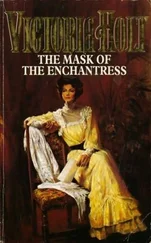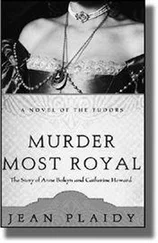Виктория Холт - Royal Sisters - The Story of the Daughters of James II
Здесь есть возможность читать онлайн «Виктория Холт - Royal Sisters - The Story of the Daughters of James II» весь текст электронной книги совершенно бесплатно (целиком полную версию без сокращений). В некоторых случаях можно слушать аудио, скачать через торрент в формате fb2 и присутствует краткое содержание. Жанр: Исторические любовные романы, на английском языке. Описание произведения, (предисловие) а так же отзывы посетителей доступны на портале библиотеки ЛибКат.
- Название:Royal Sisters: The Story of the Daughters of James II
- Автор:
- Жанр:
- Год:неизвестен
- ISBN:нет данных
- Рейтинг книги:3 / 5. Голосов: 1
-
Избранное:Добавить в избранное
- Отзывы:
-
Ваша оценка:
- 60
- 1
- 2
- 3
- 4
- 5
Royal Sisters: The Story of the Daughters of James II: краткое содержание, описание и аннотация
Предлагаем к чтению аннотацию, описание, краткое содержание или предисловие (зависит от того, что написал сам автор книги «Royal Sisters: The Story of the Daughters of James II»). Если вы не нашли необходимую информацию о книге — напишите в комментариях, мы постараемся отыскать её.
Royal Sisters: The Story of the Daughters of James II — читать онлайн бесплатно полную книгу (весь текст) целиком
Ниже представлен текст книги, разбитый по страницам. Система сохранения места последней прочитанной страницы, позволяет с удобством читать онлайн бесплатно книгу «Royal Sisters: The Story of the Daughters of James II», без необходимости каждый раз заново искать на чём Вы остановились. Поставьте закладку, и сможете в любой момент перейти на страницу, на которой закончили чтение.
Интервал:
Закладка:
“But how so?” asked Anne.
“You know what I mean. Get rid of the Marlborough woman.”
“I have never disobeyed you but in this one respect,” said Anne. “I believe that some time you will see how unreasonable it is of you to ask me to give up my greatest friend. I will not do it.”
Mary stood up. “Then I have nothing more to say to you now.”
When she had gone, Sarah, who had naturally been listening, came into the apartment.
“Well done, Mrs. Morley. I am proud of you.”
“She came just to ask me to get rid of you.”
“Insolence! She is worried you know.”
“I gathered that. It is the thoughts of invasion.”
“James has an army assembled in Normandy. If he comes, you should be prepared. He will hate them … but he will be ready to forgive you. You should write to him without delay.” Sarah brought her mouth close to the Princess’s ear. “Tell him that when he comes to England you will go at once to him.”
“Oh, Sarah, you think he will soon be here?”
“No. But it is as well to be prepared. One can never be sure.”
“How right you are on all things, Sarah.”
“It is because my undivided attention is given to the affairs of my dearest Morley.”
THE FLOWERPOT PLOT
There were many people in England at this time who were wondering how to turn the situation to their advantage—some low born as well as high—and one of these was a man named Robert Young.
He was lying in Newgate Prison when he conceived the idea of fabricating a plot which would be a sham, of course, but which could be used by people in high places to rid themselves of their enemies. He had tried to get this taken up and even succeeded in having it brought before William himself, but William had treated the suggestion with disdain and had thought it too trivial to inquire from what source it came.
Robert Young had been cheating all his life—he lived by it, he delighted in it, and if it had not brought him great wealth it had brought adventure. His greatest skill was forgery; he could copy a signature after a little practice so that it was impossible to tell it from the original. Such a gift was invaluable to his schemes and he longed to make use of it. He had spent most of his youth in Ireland although he had been born in Lancashire. He claimed that he had been educated at Trinity College, Dublin, and although he had diplomas to authenticate this his name was not on the list of graduates. By producing his forged certificates he procured admission to deacons orders and became a curate in Waterford. He married, tired of his wife, and went through a form of marriage with Mary Hutt, the daughter of an innkeeper who, liking the adventurous life, was more to his taste. He did well as a curate, performing all sorts of illegal acts for a good price, but he had to run away when one of his flock became pregnant.
He was arrested for bigamy and sent to prison but was released when he promised to divulge a Popish plot. This he did by forging the signature of various people to whom he had written at some time or other merely for the purpose of supplying himself with signatures he could copy: On the point of being discovered he came to England.
It did not take Young long to forge more documents which he pretended had been written by the Archbishop of Canterbury. With these he managed to delude several clerics, live on their bounty, and extract money from them, until he was found out; at Bury he and Mary Hutt were imprisoned.
While he was in jail he wrote to the Archbishop of Canterbury telling him that he had been ill-used, giving him a long account of a fictitious Irish background, asking for his help and promising in return to uncover plots against the state. The Archbishop ignored this and on being released from Bury jail Young forged the Archbishop’s signature and worked the same trick in England as he had in Ireland, visiting wealthy clergymen, telling them he came from the Archbishop, and extracting large sums of money from them.
Eventually the Archbishop heard of the fraud, and Young and Mary Hutt went back to jail—this time to Newgate.
Failing to gain interest in the plot he was trying to fabricate, Young decided that he would work by himself. If he could disclose a plot involving famous people he believed he would not only be released from prison but would be substantially rewarded and given an opportunity of being in the company of men who could be of use to him—if only giving him opportunities of forging their signatures.
The great scandal at this time, even in the prisons, was the dismissal of the Earl of Marlborough. Marlborough had distinguished himself in Ireland and Holland; he had been a soldier of importance even before the coming of William; yet he was deprived of all his commands and employments and living in disgrace. It was said that he had spread disaffection in the Army by complaining of favor shown to foreigners and had taken bribes. Was this the real reason? It was whispered everywhere that Marlborough was a “Jack” planning to bring back James.
A plot, thought Young, which would involve Marlborough, would make them notice him.
He drew up a document which was meant to be a declaration for the restoration of James II. He had had opportunities of examining the signatures of the people he wished to involve, for he had seen Marlborough’s signature on military papers and those of others on public declarations; and his knowledge of church affairs decided him to involve the Bishop of Rochester, who was known to be easygoing and something of an opportunist.
It was amusing to while away the weary hours of captivity formulating a plan which should be foolproof. All the men he intended to involve were already suspect; but of course Marlborough was the one who was going to cause the greatest stir.
This document had to be put in the house of one of the suspects, and then attention called to it so that it could be discovered there. But how operate all this from prison?
Young’s agile brain enjoyed nothing more than working out an involved and seemingly impossible scheme; and as he was searching for the solution he thought of a disgruntled prisoner named Stephen Blackhead.
Blackhead had suffered badly in the pillory and as a result part of one of his ears was missing, the other being badly mauled. He hated society on account of this injury.
Young began by talking to him about his wrongs—a subject Blackhead was always ready to discuss.
“You have been cruelly treated, my friend. Society is against people like us.”
Blackhead was mollified by the attention of the apparently well educated Robert Young, particularly when he was allowed to talk of his early days, of his poverty and of all he had suffered in an unsympathetic world.
Blackhead was only in prison for a short while, and Young had no idea when he himself would be released; so Blackhead was the man for the job.
“There is a way of getting your revenge on them,” said Young. “They are worse criminals than you, my dear fellow. You are trying to get enough to eat; they are trying to make wars and bring rebellion into the country.”
“Who?” asked Blackhead.
Young appeared to consider. Then he said: “I know I can trust you with an important secret. This is a matter which concerns the state. Will you swear to secrecy?”
Blackhead swore.
“I happen to have a document in my hands which could bring important people to the scaffold.” Blackhead looked incredulous. “You think I’m mad. What if I showed it to you?”
“You would?”
“I trust you my friend.”
Young brought the document from inside his jacket and showed Blackhead. Blackhead could not read, but he was impressed by the writing.
“You see that name,” Young pointed. “That is Marlborough. And you see that—that is Thomas Sprat, Bishop of Rochester. That is the Archbishop of Canterbury and those are Lord Salisbury and Lord Cornbury.”
Читать дальшеИнтервал:
Закладка:
Похожие книги на «Royal Sisters: The Story of the Daughters of James II»
Представляем Вашему вниманию похожие книги на «Royal Sisters: The Story of the Daughters of James II» списком для выбора. Мы отобрали схожую по названию и смыслу литературу в надежде предоставить читателям больше вариантов отыскать новые, интересные, ещё непрочитанные произведения.
Обсуждение, отзывы о книге «Royal Sisters: The Story of the Daughters of James II» и просто собственные мнения читателей. Оставьте ваши комментарии, напишите, что Вы думаете о произведении, его смысле или главных героях. Укажите что конкретно понравилось, а что нет, и почему Вы так считаете.









